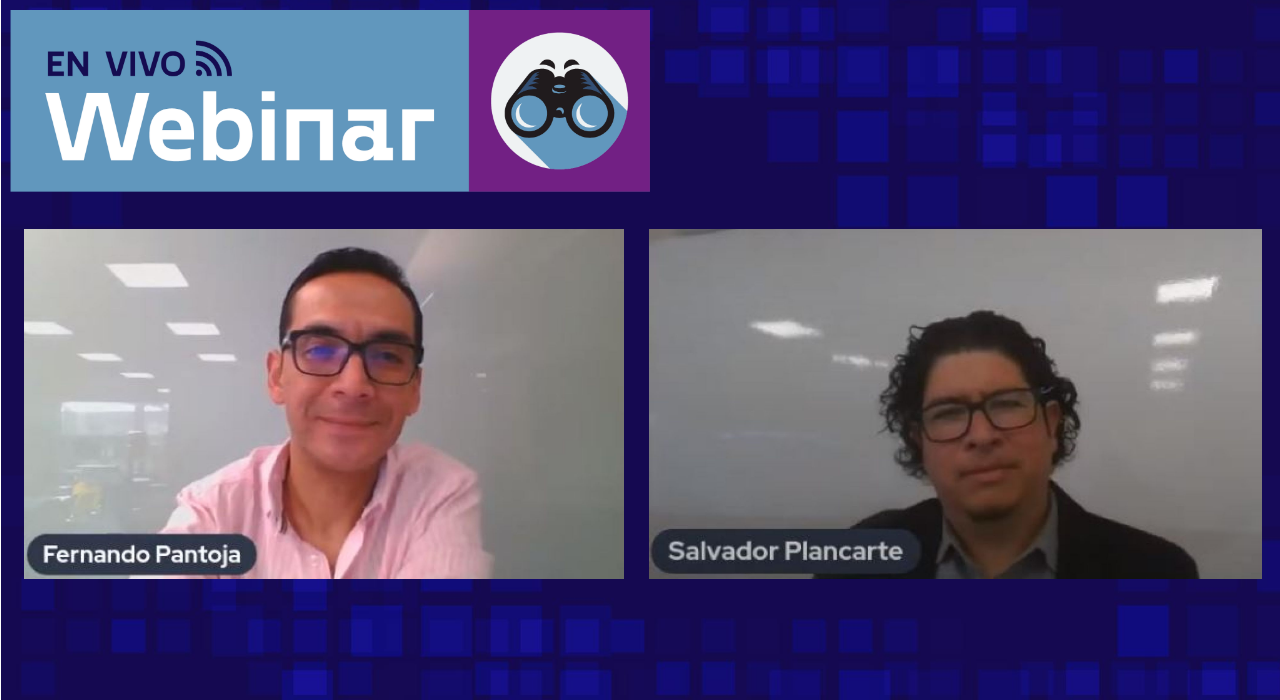“The use of video in class is a necessity but also an opportunity to transcend through audiovisual material.”
When the pandemic began, and we had to start a period of confinement in our homes, the main objectives were to ensure the continuity of classes, complete the school semester, and maintain the academic quality of the content we deliver. However, after almost a year, we all have gone through emotional highs and lows because of the uncertainty of not knowing how long the social isolation will continue. For this reason, we cannot omit the emotional health care of the students. We have to tend to their academic development and their emotional care. So commented Professor Fernando Pantoja in the January webinar of the Observatory of Educational Innovation, where approximately 1200 attendees joined the presentation. Professor Salvador Plancarte also participated in this session. The guest teachers shared practical tips on generating activities using video as a teaching tool. I invite you to watch the video of this webinar, available at any time.
In this webinar, Professor Fernando Pantoja teaches what Stop Motion videos are and the tools we use to create them in class. This teaching material develops artistic, creative, and technological skills in students. He also shares a class activity design enabling us to integrate storytelling with video stop-motion. Additionally, he explains how we can use YouTube videos with virtual reality and 360-degree videos. Applying these types of audiovisual materials in class promotes critical thinking and problem-solving and stimulates curiosity. The webinar also covers the lessons learned from implementing the Tik Tok platform and its relation to developing socio-emotional skills using an academic approach known as RULER (Recognize, Understand, Label, Express, and Regulate). The professors also presented different alternatives for editing videos through applications, internet pages, and social media management. This helpful webinar is available on the Facebook page or Youtube channel of the Observatory of Educational Innovation.
“More than ever, we are immersed in technology in our daily lives. Regardless of whether we are technological migrants or natives, our purpose in education is to maintain communication with our students, continue classes, and care for students’ and teachers’ emotional health.”
The use of video in class is both a necessity and an opportunity to deepen understanding through audiovisual materials. In this session, Professor Salvador Plancarte explains the relevance and transcendence of using video in the classroom to improve virtual courses’ experience. Here are some tips from Salvador on how to create academic activities in class using videos. For more detail, I invite you to watch the full webinar here:
-
80% of our brain is designed to assimilate and process images.
-
“Remember that the content being created is for the world, not just for classrooms, and it can potentially go viral.”
-
The format does not matter but does establish an academic objective and structure.
-
Empathy (Imagine before creating.)
-
Table work (Collaborate as a team and review how to improve the video.)
-
Storytelling (“Verbo mata carita:” Knowing how to use words is better than having a pretty face!)
-
Try to make creating collaborative class videos a fun experience.
-
The technique does not matter. (Trust the students’ work.)
-
Do not worry about the technique or execution; the students will surprise you.
The confinement to which the pandemic subjected us during 2020 forced us to make multiple changes in training students. It is crucial to establish innovative teaching strategies, but we must also focus on students’ emotional care. They have been affected significantly by social distancing. The design of activities to incorporate these two objectives is one of the main challenges of this pandemic. Teachers have had to leverage all their professional experience and adapt it to these needs, learning different technological tools, many of which were unfamiliar to them. Eventually, learning these tools renews the teachers’ profiles for distance education.
Fernando Pantoja (fernando.pantoja@tec.mx) is a high school teacher at the Tecnologico de Monterrey, Morelia Campus. He is a teacher in education with an emphasis on teaching-learning processes. He has also participated as a presenter in national and international congresses on educational innovation.
Salvador Plancarte (s.plancarte@tec.mx) is a screenwriter, audiovisual content consultant, educational program designer, and researcher.
If your native language is not Spanish, you can instantly enable translated subtitles on YouTube during the Webinar covered in this article. To activate this option, select the Subtitles option on YouTube (Spanish subtitles will appear), then select Settings ->Subtitles -> Translate automatically, and next, the language you prefer.
Translation by Daniel Wetta.
This article from Observatory of the Institute for the Future of Education may be shared under the terms of the license CC BY-NC-SA 4.0 
)
)


)